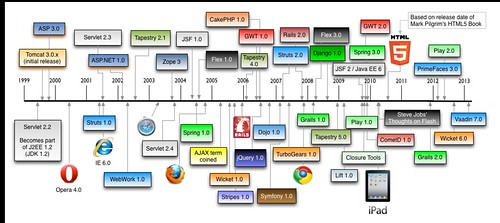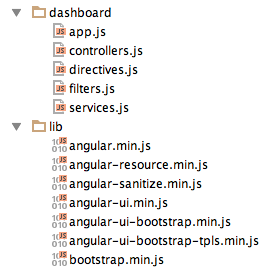 This week, my lovely fiancé and I traveled to the City of Light. Our journey was designed around some speaking engagements at Devoxx France. Devoxx is one of my favorite conference franchises and Devoxx France has been special to me ever since the Devoxx (Belgium) I spoke at in 2011.
This week, my lovely fiancé and I traveled to the City of Light. Our journey was designed around some speaking engagements at Devoxx France. Devoxx is one of my favorite conference franchises and Devoxx France has been special to me ever since the Devoxx (Belgium) I spoke at in 2011.
2011 was the year I spoke about my experience with Play, Scala, CoffeeScript and Jade. I wrote the presentation on my flight over, composed the demo video the night before and made it all happen in the nick of time. Of course, this was after 120 hours of research and preparation, so the presentation composition process had all the data I needed. You can imagine my sense of relief after pulling off that talk and getting an enthusiastic applause from the audience for my efforts.
One of the first audience questions I received was from Nicolas Martignole, asking if I'd speak at Devoxx France the following year. I whole-heartedly agreed to do it and was excited for the opportunity. It was with great disappointment that I later found out I couldn't attend Devoxx France in 2012. My client didn't like me taking so much time off and I agreed to scale my two week vacation back to 1 week. This year, I was determined to go, so I submitted some of my favorite talks: Comparing JVM Web Frameworks and The Play vs. Grails Smackdown with James Ward. I was extremely pleased when they both got accepted.
Side Story: I met Martin Odersky shortly when he sat down next to me for the Java Posse presentation in Belgium in 2011. After shaking his hand and introducing myself, I had to politely ask him to leave because it was Trish's seat. Talk about awkward; but Martin was very gracious and promptly found a new seat close by.
 Comparing JVM Web Frameworks
Comparing JVM Web Frameworks
Both talks required a bit of updating. For Comparing JVM Web Frameworks, I started reading The Paradox of Choice and found many parallels to the agony that developers experience with choosing a web framework. I described how I didn't think good framework decisions were based on the many, many features that frameworks have, but often on pre-defined constraints. There's those lucky developers that get to choose a Full Stack Framework because they're doing greenfield development. Then there's those that want a better Pure Web Framework that replaces something (e.g. Struts) that's not satisfying their needs. And lastly, there's those that've found it possible to leverage a SOFEA and use a JavaScript MVC framework with an API Framework on the backend. I don't think it makes sense to compare all web frameworks and I tried to use these pre-defined constraints (language, platform and application type) argument to separate into categories and help make choosing easier.
I took out the parts of the presentation that've pissed people off in the past - particular the JSF bashing by James Gosling, the Rails gushing from Craig McClanahan and the Pros and Cons sections of each framework. I added the history of web frameworks and research from InfoQ and devrates.com.

The best part of the JVM Web Frameworks talk was the audience's reaction and enthusiasm. Devoxx always seems to attract passionate developers and Devoxx France was no different. Developers packing the room, clapping after your intro, laughing at your jokes, signifying that they agree with you about JSF. As a speaker, it's an unbelievable experience.
You can view my Comparing JVM Web Frameworks presentation below or on Slideshare.net.
Play Frameworks vs. Grails Smackdown
To prepare for James Ward and my Play vs. Grails Smackdown, we had a number of goals. First of all, we wanted to update our apps to use the latest versions of each framework. I documented what it took for Grails, James just checked in his code to GitHub. It was interesting to see that Grails 2.0.3 -> 2.2.1 caused a number of issues with testing, while Play 2.0.3 -> Play 2.1.0 required API changes, but nothing for tests. Secondly, we updated all the stats for our pretty graphs and ran load tests again.
This is where the fun started. On Tuesday evening, I decided to challenge the notion that Play was twice as fast as Grails. James had proven this with Apache Bench tests. With Play 2.0 and Grails 2.0 (last summer), we clocked Play at 251/requests per second and 198 for Grails. After upgrading each app to the latest releases, we found the numbers to be 233/second for Play and 118 for Grails.
However, Apache Bench only tests until the first byte is received. Since I've done a lot of browser optimizations recently, I fired up whichloadsfaster.com, captured a screenshot and added it to our presentation. The next day, James added a CDN and a bunch of caching to his app and re-ran his AB tests.
Now he was smoking Grails, so I added a CDN and caching as well. However, the best I could do was just over 1000/requests per second, while he was around 2200/second. When he ran live tests during our talk, Play was around 2800/sec and Grails was around 900.
It was great to see how much better performance we could get with caching and a CDN. The best part is this should be available to most applications, not just these frameworks. By adding a CDN (we used Amazon CloudFront) and caching, we were both able to 10x the performance of our apps. You can find our presentation here or view it below.
Summary
This was a very enjoyable conference to attend as a speaker. First of all, it was in one of the most beautiful cities in the world, but it's also a very special place for Trish and I. We got engaged just outside of Paris in Versailles after the last Devoxx conference I spoke at. Trish has some amazing photos from that trip. Secondly, the Devoxx conference attracts a special kind of developer - one that is passionate about and eager for knowledge. Lastly, speaking with my good friend James, in an exotic city about something we love - that was special. Asking for beers and having them brought to us at the start of our Smackdown. That was magical (thanks Nicolas!).
To all the Devoxx organizers and crew - well done on a great show!





